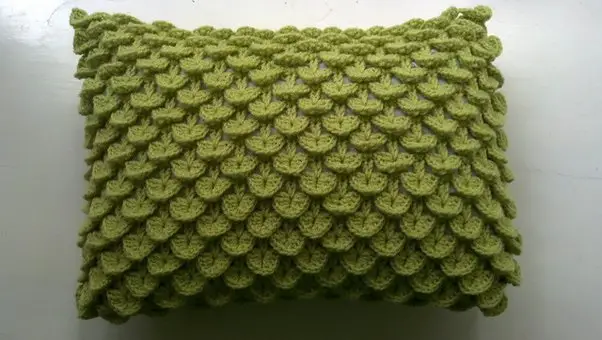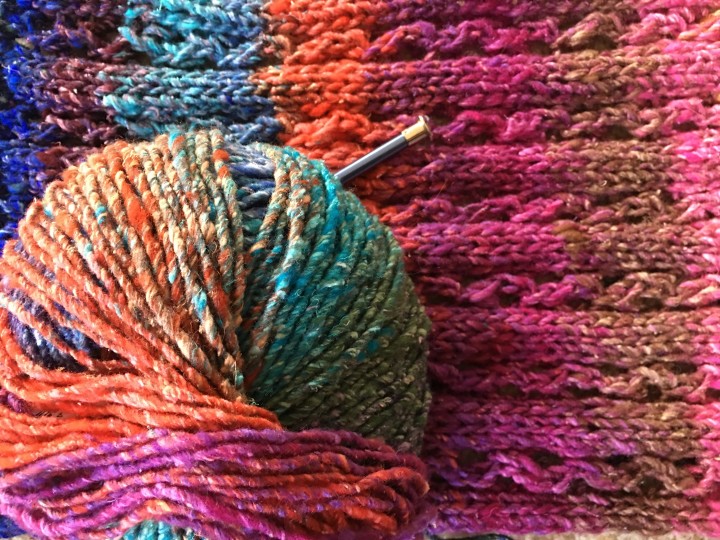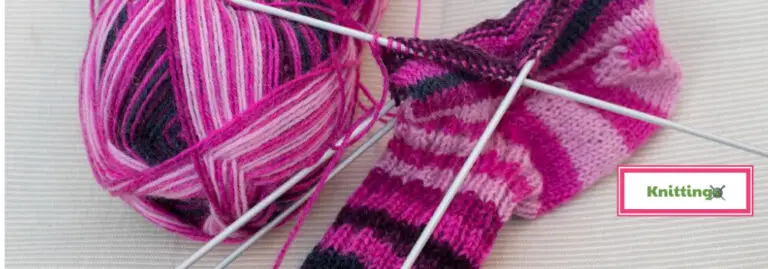Stockinette stitch on circular needles is worked in the round and is the same as knitting stockinette stitch on straight needles, except that you never turn your work. Instead, you continuously knit every round, creating a seamless tube of fabric.
Advantages Of Using Circular Needles For Stockinette Stitch
There are several advantages of using circular needles for knitting stockinette stitch:
- Seamless knitting: With circular needles, you can knit in the round and create a seamless tube of fabric. This means you don’t have to sew seams together at the end, which can save time and make for a more polished finished product.
- Even tension: Since circular needles distribute the weight of the knitting project across the entire length of the needle, you are less likely to get uneven tension or “laddering” in your knitting.
- Comfortable to use: Circular needles allow you to work on a larger project without having to hold all the weight of the project on a single needle. This can make knitting for extended periods of time more comfortable and less tiring on your hands and wrists.
- Versatility: Circular needles can be used for a wide variety of knitting projects, including both flat and circular knitting. This means you don’t have to switch between different types of needles for different parts of a project, which can simplify the knitting process.
Materials Needed for Stockinette Stitch on Circular Needles
To knit stockinette stitch on circular needles, you will need:
- Circular needles: Choose a size appropriate for your yarn and the desired gauge of your project.
- Yarn: Choose a yarn that is appropriate for your project and the desired gauge. The amount of yarn you need will depend on the size of your project.
- Stitch marker: Use a stitch marker to mark the beginning of the round.
- Scissors: You will need scissors to cut the yarn at the end of your project.
- Tapestry needle: You will need a tapestry needle to weave in the ends of your yarn when you finish your project.
- Pattern: Have a pattern or instructions for the project you wish to create.
With these materials, you will be able to cast on, knit, and finish a project using the stockinette stitch on circular needles.
Preparing to Knit Stockinette Stitch on Circular Needles
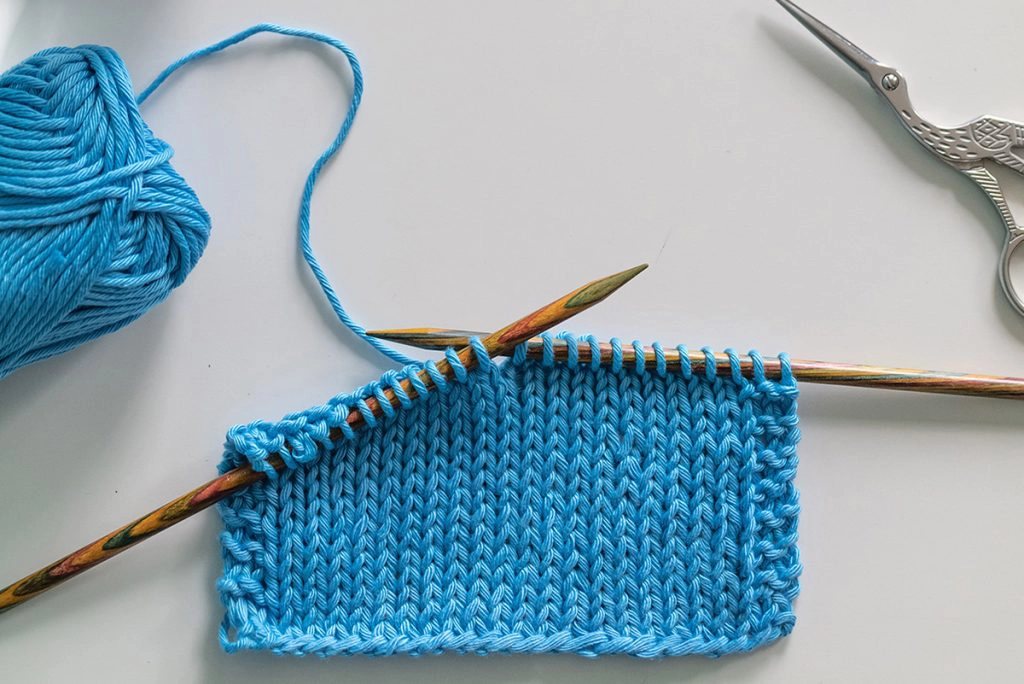
To prepare to knit stockinette stitch on circular needles, follow these steps:
- Choose the right size needles: Select circular needles that are appropriate for the yarn you are using and the desired gauge of your project. Check the yarn label or pattern for recommended needle sizes.
- Cast on stitches: Use the circular needles to cast on the desired number of stitches for your project. Be sure to join the stitches in the round, using a stitch marker to mark the beginning of the round.
- Check your gauge: Knit a few rows to check your gauge and make sure your stitches are the correct size. Adjust your needle size if necessary.
- Begin knitting: Once you are happy with your gauge, begin knitting the stockinette stitch in the round by knitting every stitch on every row.
- Use stitch markers: Place stitch markers at the beginning and end of any pattern repeats if your pattern calls for them. This will help you keep track of where you are in the pattern.
- Count your stitches: Count your stitches periodically to make sure you have not accidentally added or dropped any stitches.
Knitting Stockinette Stitch on Circular Needles
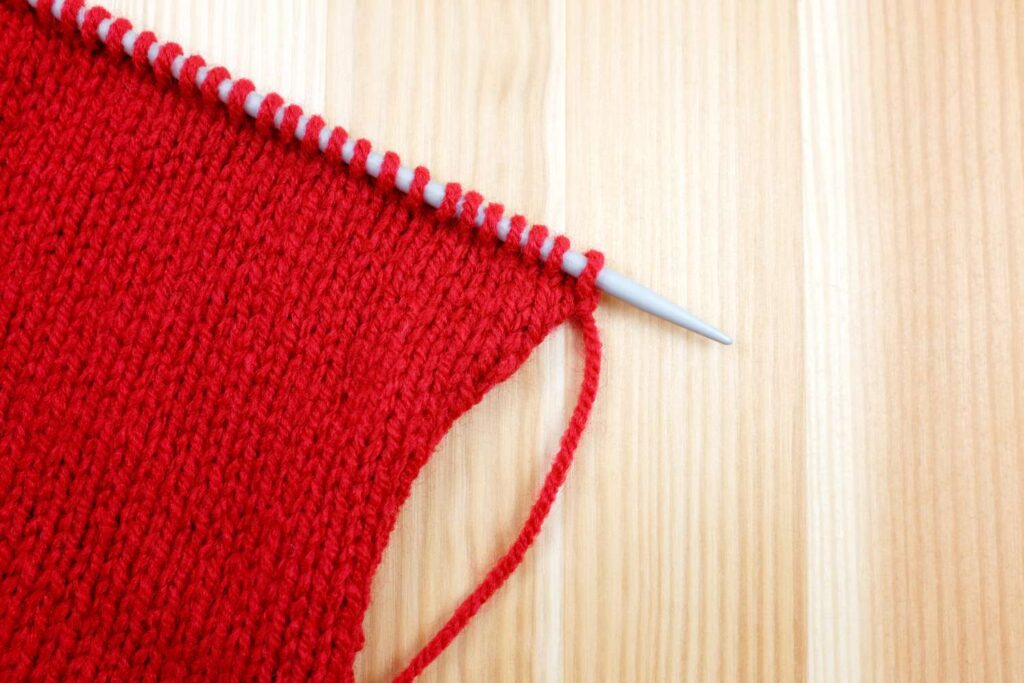
To knit stockinette stitch on circular needles, follow these steps:
- Hold the circular needles with the stitches in your left hand and the working yarn in your right hand.
- Knit every stitch: With the yarn in the back, insert the right needle into the first stitch on the left needle from front to back. Wrap the yarn around the right needle counterclockwise and pull the loop through the stitch on the left needle, then slip the stitch off the left needle. Repeat this process for every stitch on the left needle, until all stitches are on the right needle.
- Continue knitting: With the working yarn in the back, insert the right needle into the first stitch on the left needle from front to back, and repeat step 2 for every stitch in the round. Continue knitting every stitch on every round until your project reaches the desired length.
- Check your work: Occasionally check your work for accuracy and make sure that your tension is consistent.
- Use stitch markers: If your pattern calls for stitch markers, place them at the beginning and end of any pattern repeats, or wherever indicated in the pattern.
- Bind off: When you have finished your project, bind off by knitting two stitches, then use the left needle to lift the first stitch over the second stitch and off the right needle. Repeat this process until one stitch remains, then cut the yarn and weave in the end using a tapestry needle.
How to End Stockinette Stitch on Circular Needles
To end stockinette stitch on circular needles, follow these steps:
- Complete your final round: Continue knitting stockinette stitch in the round until your project reaches the desired length.
- Bind off: Once you have completed your final round, it’s time to bind off. Knit two stitches, then use the left needle to lift the first stitch over the second stitch and off the right needle. Repeat this process until one stitch remains.
- Cut the yarn: Cut the yarn, leaving a tail of several inches.
- Weave in the ends: Thread the tail onto a tapestry needle and weave it in and out of the stitches on the back of your work to secure it. Trim any excess yarn.
- Block your project: To give your project a polished look, you may want to block it. Wet blocking involves soaking your project in water, then laying it out flat to dry. Steam blocking involves using a steam iron to gently steam your project while it’s still dry. Follow the instructions for your particular yarn and project to determine the best blocking method.
Conclusion
In conclusion, knitting stockinette stitches on circular needles is a versatile and popular technique that can be used to create a wide variety of projects. With the right materials, preparation, and technique, you can create seamless, professional-looking garments, accessories, and home décor items using this simple yet beautiful stitch. By following the steps outlined above, you will be able to cast on, knit, and finish a project using the stockinette stitch on circular needles. Whether you’re an experienced knitter or just starting out, mastering this essential stitch will open up a world of possibilities for your knitting projects.
References:
https://sheepandstitch.com/library/stockinette-stitch-knitting-for-beginners/
https://www.theknittingcircle.com/video/work-stockinette-stitch-in-rounds-018397/




